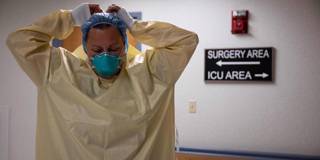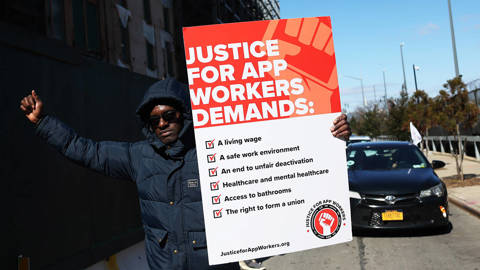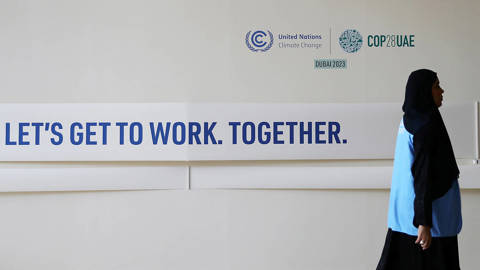America desperately needs a supply-side revolution to unclog its health-care system’s arteries and make up for an increasingly urgent shortage of doctors. As matters stand, new medical schools, qualified doctors, and well-tested medicines all face unnecessary roadblocks.
SAN DIEGO – Between 1980 and 2000, America’s National Basketball Association added six teams, while the National Football League and Major League Baseball added four each. How many medical schools did the United States add? None. In many cities, it may now be easier to find a fleet-footed quarterback than a pediatrician.
For years, the American Medical Association stanched the flow of new students, claiming in 1997 that “the US is on the verge of a serious oversupply of physicians.” We are now seeing the results: overstretched Minneapolis nurses are marching on picket lines demanding 30% wage hikes; and rural hospitals and health-care providers around the country are chronically short of doctors.
The situation calls for a supply-side revolution to unclog the health-care system’s arteries. We’ve already seen what a supply-side surge can do in other sectors. In hospitality, the arrival of Airbnb effectively added 25% more hotel rooms nationwide, making it tougher for hotels to boost prices.
Why haven’t we seen similar developments in health care? In fact, we have – but only in sectors free from entrenched special-interest groups and government over-regulation. For example, there is healthy competition to provide elective procedures like LASIK eye surgery and Botox. In the decade after LASIK was approved in 1999, thousands of surgeons learned how to aim lasers at corneas, pushing down the price by 25%. Botox, meanwhile, must compete with Dysport and Jeuveau, while dermatologists compete with cosmetologists at spas. These market dynamics deliver better prices for furrow-browed consumers around the country.
Unfortunately, the same cannot be said for sectors that are more important for people’s basic health. By 2026, the proportion of US physicians reaching retirement age will jump from 12% to 21%. Many will choose golf or mahjong over maintaining a medical practice or being on call at the hospital. And even though universities have finally opened more medical schools, the number of new graduates cannot keep up with growing demand from an aging populace. As a result, the Association of American Medical Colleges (AAMC) foresees a shortage of up to 124,000 doctors by 2034.
And the US is not alone. One in five residents of Ireland is waiting to see a physician, and in Canada, a chihuahua can get a CT scan for cancer more easily than a human can.
A supply-side health-care revolution would topple the obstacles impeding the supply of qualified doctors and well-tested medicines. As matters stand, it can take $200 million and ten years before the Liaison Committee on Medical Education (reporting to the US Department of Education) investigates, schedules hearings, and finally grants approval for a new medical school. And that’s just the beginning. Even if a medical school opens, graduates struggle to find residency slots to complete their training, because a 1997 law froze the number of residencies by tying them to Medicare spending. Congress should lift this cap.
Moreover, medical education should be streamlined. In 2015, the AAMC overhauled the Medical College Admission Test to encourage students to spend more time focusing on empathy and sociology. Test takers are now asked to define terms like “social constructionism.” But while empathy is important, it isn’t going to help patients who are waitlisted for procedures or residing in areas where there are no doctors.
To increase supply, the US should follow other developed countries in allowing aspiring doctors to begin their medical training as undergraduates. At the University of Cambridge, medical students examine their first cadavers at age 18, rather than waiting until they are 22. In the US, a typical medical-school graduate first spends four years taking undergraduate courses and racking up crushing debt.
The US should also ease the way for foreign doctors who have already completed rigorous testing in other advanced economies. Let’s say you are a cardiologist who has been practicing for 20 years in Germany or Singapore. Even if US immigration authorities let you into the country, you will still have to dive through a series of ever-tighter hoops, including federal and state licensing exams, clinical skills labs, and a whole new multiyear residency at a US hospital.
Likewise, the Food and Drug Administration should ease the path for drugs that have been tested, approved, and deployed in other developed countries. Typically, the FDA requires pharmaceutical companies to spend tens of millions of dollars and many years repeating successful clinical trials, as if Americans (albeit heftier) are a different species than humans found elsewhere.
Consider what the current system has wrought. In 2013, a lethal meningitis strain spread through Princeton University’s dorms, forcing the school’s administrators to beg the government to allow them to access a Swiss vaccine made by Novartis. When monkeypox hit the US and Europe this summer, European regulators quickly approved an effective smallpox antiviral, but Americans had to wait, even though the US had a stockpile of 1.7 million doses. The FDA delayed because it wanted the National Institutes of Health to conduct a multiyear randomized control experiment, as if the epidemic would wait.
Epidemics don’t wait, of course – and neither should we. While we cannot predict the next wave of meningitis or monkeypox, we certainly can avoid a man-made epidemic of untreated patients, looking in vain for someone who can help.











SAN DIEGO – Between 1980 and 2000, America’s National Basketball Association added six teams, while the National Football League and Major League Baseball added four each. How many medical schools did the United States add? None. In many cities, it may now be easier to find a fleet-footed quarterback than a pediatrician.
For years, the American Medical Association stanched the flow of new students, claiming in 1997 that “the US is on the verge of a serious oversupply of physicians.” We are now seeing the results: overstretched Minneapolis nurses are marching on picket lines demanding 30% wage hikes; and rural hospitals and health-care providers around the country are chronically short of doctors.
The situation calls for a supply-side revolution to unclog the health-care system’s arteries. We’ve already seen what a supply-side surge can do in other sectors. In hospitality, the arrival of Airbnb effectively added 25% more hotel rooms nationwide, making it tougher for hotels to boost prices.
Why haven’t we seen similar developments in health care? In fact, we have – but only in sectors free from entrenched special-interest groups and government over-regulation. For example, there is healthy competition to provide elective procedures like LASIK eye surgery and Botox. In the decade after LASIK was approved in 1999, thousands of surgeons learned how to aim lasers at corneas, pushing down the price by 25%. Botox, meanwhile, must compete with Dysport and Jeuveau, while dermatologists compete with cosmetologists at spas. These market dynamics deliver better prices for furrow-browed consumers around the country.
Unfortunately, the same cannot be said for sectors that are more important for people’s basic health. By 2026, the proportion of US physicians reaching retirement age will jump from 12% to 21%. Many will choose golf or mahjong over maintaining a medical practice or being on call at the hospital. And even though universities have finally opened more medical schools, the number of new graduates cannot keep up with growing demand from an aging populace. As a result, the Association of American Medical Colleges (AAMC) foresees a shortage of up to 124,000 doctors by 2034.
And the US is not alone. One in five residents of Ireland is waiting to see a physician, and in Canada, a chihuahua can get a CT scan for cancer more easily than a human can.
SPRING SALE: Save 40% on all new Digital or Digital Plus subscriptions
Subscribe now to gain greater access to Project Syndicate – including every commentary and our entire On Point suite of subscriber-exclusive content – starting at just $49.99.
Subscribe Now
A supply-side health-care revolution would topple the obstacles impeding the supply of qualified doctors and well-tested medicines. As matters stand, it can take $200 million and ten years before the Liaison Committee on Medical Education (reporting to the US Department of Education) investigates, schedules hearings, and finally grants approval for a new medical school. And that’s just the beginning. Even if a medical school opens, graduates struggle to find residency slots to complete their training, because a 1997 law froze the number of residencies by tying them to Medicare spending. Congress should lift this cap.
Moreover, medical education should be streamlined. In 2015, the AAMC overhauled the Medical College Admission Test to encourage students to spend more time focusing on empathy and sociology. Test takers are now asked to define terms like “social constructionism.” But while empathy is important, it isn’t going to help patients who are waitlisted for procedures or residing in areas where there are no doctors.
To increase supply, the US should follow other developed countries in allowing aspiring doctors to begin their medical training as undergraduates. At the University of Cambridge, medical students examine their first cadavers at age 18, rather than waiting until they are 22. In the US, a typical medical-school graduate first spends four years taking undergraduate courses and racking up crushing debt.
The US should also ease the way for foreign doctors who have already completed rigorous testing in other advanced economies. Let’s say you are a cardiologist who has been practicing for 20 years in Germany or Singapore. Even if US immigration authorities let you into the country, you will still have to dive through a series of ever-tighter hoops, including federal and state licensing exams, clinical skills labs, and a whole new multiyear residency at a US hospital.
Likewise, the Food and Drug Administration should ease the path for drugs that have been tested, approved, and deployed in other developed countries. Typically, the FDA requires pharmaceutical companies to spend tens of millions of dollars and many years repeating successful clinical trials, as if Americans (albeit heftier) are a different species than humans found elsewhere.
Consider what the current system has wrought. In 2013, a lethal meningitis strain spread through Princeton University’s dorms, forcing the school’s administrators to beg the government to allow them to access a Swiss vaccine made by Novartis. When monkeypox hit the US and Europe this summer, European regulators quickly approved an effective smallpox antiviral, but Americans had to wait, even though the US had a stockpile of 1.7 million doses. The FDA delayed because it wanted the National Institutes of Health to conduct a multiyear randomized control experiment, as if the epidemic would wait.
Epidemics don’t wait, of course – and neither should we. While we cannot predict the next wave of meningitis or monkeypox, we certainly can avoid a man-made epidemic of untreated patients, looking in vain for someone who can help.